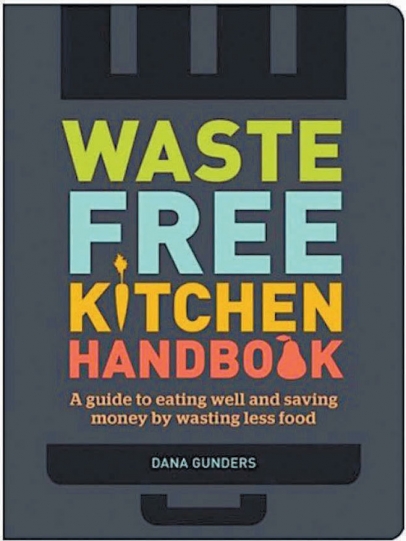Wanting to Waste Not
When faced with a big problem, isn’t it a relief to have someone point you in the right direction? Food waste in the United States is a huge problem – perhaps 40 percent of food in the country is not eaten – so in her book Waste Free Kitchen Handbook, Dana Gunders lays out the reasons, as well as a whole slew of baby steps to help the reader make personal changes in the right direction.
Through her agricultural research at the nonprofit Natural Resources Defense Council, Gunders uncovered streams of food waste at the farm, distribution, and consumer level and released that information in a 2012 technical report. The story was quickly picked up by media outlets, and before she knew it, Gunders was on national television multiple times and in the process of turning her findings into a book. Maybe we all understood that there was something deeply wrong, that while one in six Americans is food insecure, there is also $165 billion of food thrown out in the United States each year.
The striking analogy Gunders offers is to think of 40 percent food waste not as a number, but to picture yourself buying five bags of groceries at the store, then dropping two in the parking lot and not bothering to pick them up. That is what 40 percent food waste looks like. The aim of her book is to help at the household level, giving each of us strategies to slim down our waste as we shop, cook, and eat. The book’s subtitle, “a guide to eating well and saving money by wasting less food,” lets us in on another perk: more dollars left over at the end of the month.
The three main chunks of the Waste Free Kitchen Handbook – strategies, recipes, and directory – are color coded for quick flipping. The strategies section is where the new habits reside, nudging the reader to shop smarter by using meal plans and lists, to evaluate waste at the end of the week, and to store food well. Colorful infographics and usable charts are included to help along the way. Other chapters in this section are for specific situations, such as “Salvaging Kitchen Crises” or “Party Portion Planning.” The chapters “Can I Eat It?” and “Composting” mark the end of the line for the mysteries from the back of the fridge.
The recipes section is the shortest but can help spark new ideas within the waste-free mindset, such as salvaging those overripe bananas as sorbet, and infusing those grapefruit peels in vodka. Finally, the directory is an alphabetical resource, from apples to yogurt and beyond, of how to store and use up ingredients, including tips on how to freeze them and knowing when things have gone bad.
Although there are lots of ways to consider waste in our kitchens, such as addressing excess packaging, lowering electrical and gas energy use, and even reducing our own time spent, the handbook by Gunders focuses solely on the food that needlessly winds up in the trashcan. It is a great start, and while we may never get to “waste free,” we can, without a doubt, waste less.
Sample pages, including a compost checklist and how to get the most out of your refrigerator, are available at NRDC.org/Food/WasteFreeKitchen.




